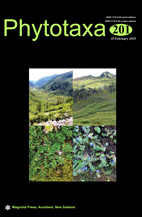Abstract
Pterolepis haplostemona from ultramafic outcrops in Goiás, Brazil is described, illustrated, and compared with presumed relatives, all of which are also endemic to Brazil. It is distinguished by its annual habit, simple hypanthial trichomes and intercalycine emergences, haplostemonous flowers, rostrate antesepalous stamens, short pedoconnective, linear-lanceolate cauline leaf blades, calyx lobes tipped with a rigid unbranched trichome, and 3-4-locular ovary. This species and Microlicia macedoi appear to be the only known Melastomataceae that are endemic to serpentine substrates in Brazil. A conservation assessment based on IUCN criteria is also provided.

